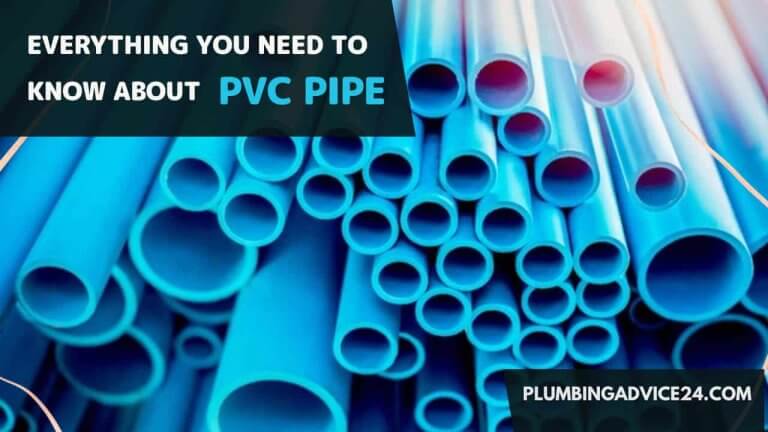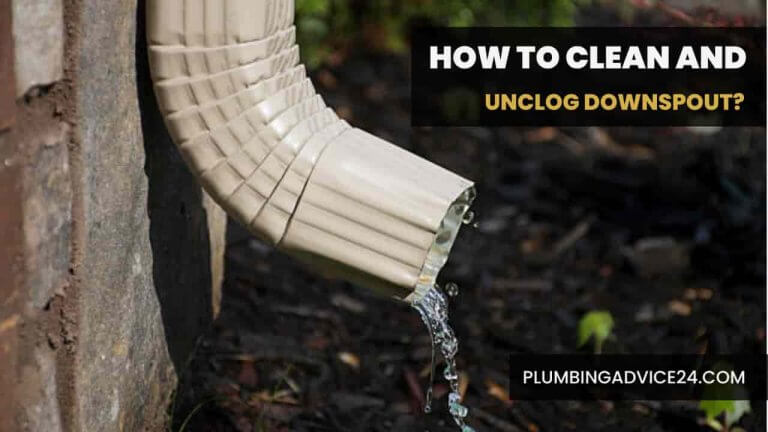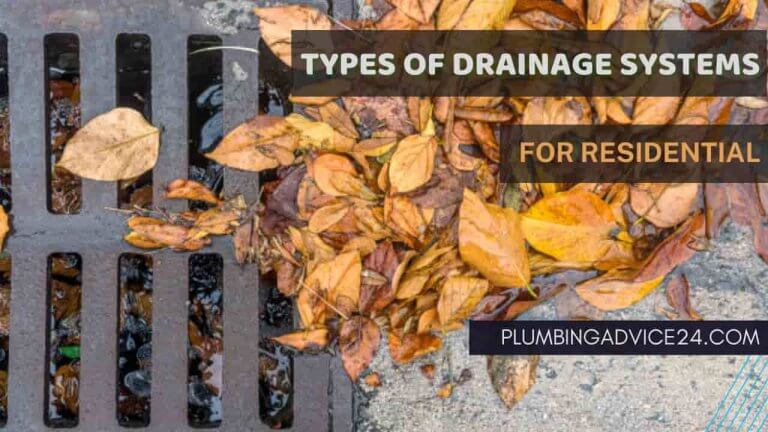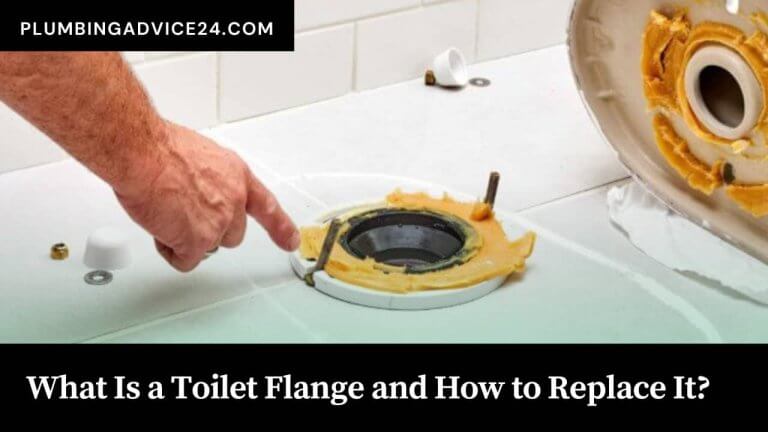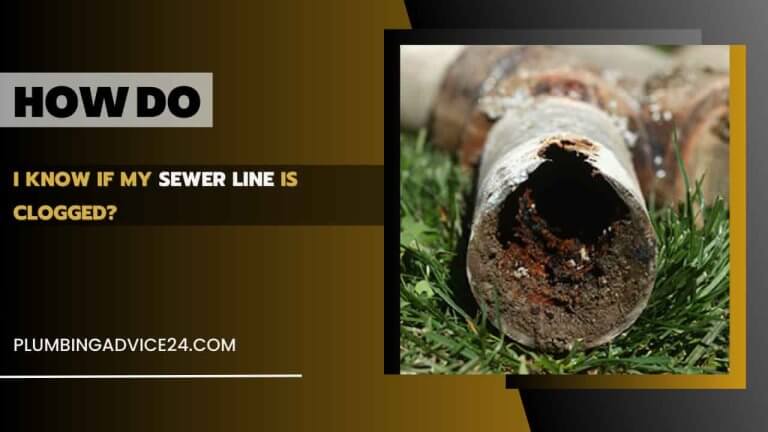Polybutylene Pipe Problems and Their Solution-Complete Guide
Polybutylene pipe was installed in millions of homes between 1975 and 1995, but we now know that it is a faulty water pipe. It is estimated that between 7 and 10 million homes in the US were covered by poly during this period.
In 1995, two major lawsuits ended the use of polybutylene, and building codes no longer allowed the material. The $750 million settlement was used to pay families across the country for damaged homes where pipes leaked or burst.
So let’s get the complete information about these interesting pipes, which are not in use now, but it has a very bad history, and people have many questions about them. You will also like to know the history of this pipe.
What Is Polybutylene Pipe?
Polybutylene (PB) was a plastic manufactured between 1978 and mid-1995 for use as piping in home plumbing systems. It is also often known as a poly pipe. Due to the many advantages of the material, such as low cost, flexibility, resistance to freezing, and ease of installation, the polybutylene piping system was seen as the “pipe of the future” and used as an alternative to traditional copper piping.
During that period, pipes made from polybutylene were installed in 10 million homes in the United States. It is most commonly found in the “Sun Belt,” where residential construction was heavy in the early to mid-1980s and ’90s, but it is also very common in the Mid-Atlantic and Pacific Northwest states.
Polybutylene Piping systems were used as groundwater mains and internal water distribution piping. Piping was installed in about one out of every four or five homes built during the years in which pipes were manufactured.
Despite the strength of polybutylene pipes, production was discontinued in mid-1996 after several allegations that they were bursting and causing property damage. In homes still containing this material, homeowners must either pay to replace the pipes or risk a potentially costly plumbing failure.
Must Read : What Is Plumbing Pipe | 22 Different Types of Plumbing pipes
Polybutylene Life Expectancy
When polybutylene pipes break, they have the potential to cause costly damage to a home. It was used in home plumbing systems from the late 1970s to the mid-1990s.
But plumbers quickly recognized that this plastic could not withstand elements such as chlorine and fluoride that are common in municipal water supplies. Due to this, these pipes became brittle and cracked.
Polybutylene life expectancy is around 10 to 15 years; within 10 to 15 years, these pipes deteriorate and lead to pipe bursting or leaking problems. They are no longer used in plumbing systems, but some homes from that era still have poly pipes.
If you have these pipes, they have outlived their life expectancy, so you may want to seek the help of a professional plumber to explore your options for pipe replacement.
Must Read : What Is Pipe Fittings | 12 Types of Pipe Fittings
Polybutylene Pipe Problems
Polybutylene became a popular pipe choice in the mid-1970s because it was flexible, resistant to freezing, and inexpensive. But plumbers quickly noticed that polybutylene wasn’t as wonderful as they thought. Over time, oxidation and exposure to chlorine in the water supply can cause pipes to swell and crack, causing widespread flood damage throughout the home, usually without warning. These problems led to class-action lawsuits in the 1980s.
If you have recently purchased a home and are not sure if your pipes are polybutylene, it is important to contact a plumbing professional to find out before you face serious water damage.
Complaints were filed during the 1980s alleging defective manufacturing and faulty installation that caused tens of millions of dollars in damages. Although the manufacturers have never admitted Polly’s fault, they have agreed to fund the class action settlement with an initial and minimal amount of $950 million.
You should contact the appropriate settlement claim company to find out if you are eligible for this settlement.
Must Read : What is Cast Iron Pipe | How to Repair Cast Iron Pipe | Cast Iron Pipe Replacement Cost
How to Identify Polybutylene Pipes?
Polybutylene pipe is usually gray but can also be blue, black, white, or silver. Polybutylene pipes are usually 1/2″ or 1″ in diameter and stamped with a code beginning with the code “PB.” Indoors, polybutylene piping is usually gray. While outdoors, these pipes are mostly blue.
Polybutylene pipes were installed only as water supply lines. You won’t find them as a drain, waste, or vent pipe. To identify them, you will need to look for common places, which are given below:
- On the main shutoff valve
- Attached to the sink and toilet
- Connected to water heater
- Along basement ceilings where pipes are exposed
- On the water meter
If the polybutylene pipes are under the house, such as in a crawl space, you may be able to repair the leak instead of replacing the pipes. Most of the time, the leak occurs under the house and does not damage the actual house. But, some regions require that damaged pipes be replaced rather than repaired after they leak.
However, if the house is built on a concrete slab, replace the polybutylene piping. Poly pipes are going to fail eventually, so proactively replacing them will be more cost-effective than fixing the damage and still having to replace the pipes later.
Must Read : Galvanized Pipe Problems | How to Identify Galvanized Pipes | Alternatives to Replacing Galvanized Pipe
Repair Polybutylene Pipe
Polybutylene piping is very difficult to repair because polybutylene plumbing pipe or the quest fittings used to connect it are no longer commonly manufactured or sold. Then, the standard solution to problems is to repair damaged sections of polybutylene by transitioning to another type of pipe or even replacing the entire system.
There are a few options when choosing what type of fitting to use for transitioning from polybutylene. Polybutylene tubing has the same outside diameter as PEX, CPVC, and copper pipe, so using a push-fit fitting is an option you can use. Another is to use specific transition fittings designed to transition between two different materials.
Repair Polybutylene Pipe Leak
When you find a small leak in a straight length of pipe under the house or in other accessible places, push-on fittings can be used for quick repairs. Simply cut out the pinhole area and push on the repair coupling. Be sure to measure so you don’t cut more pipe than necessary.
For accessible areas, push-fit fittings, often sold under brand names such as Sharkbite or John Guest, are the easiest way to repair.
Polybutylene Pipe to PEX
For inaccessible repairs, the best option is to use a transition coupling designed specifically to transition from polybutylene to PEX pipe. The PB to PEX transition coupling is made of brass, and it compensates for the difference in the inside diameter of polybutylene pipe and PEX.
This transition coupling also has two separate crimp rings, one used specifically to secure transition fittings to polybutylene pipe and the other to secure transitions to PEX.
A polybutylene pipe or polybutylene joint that is leaking inside a wall should be repaired by replacing the bad section with a non-polybutylene pipe. The best solution is to use a transition coupling to convert that section to PEX. You can transition near the leak, but if possible, follow the length of the pipe and replace as much pipe as you can reach.
Must Read : 5 Ways to Repair PVC Pipe | Repair PVC Pipe Without Cutting | Replace PVC Pipe Section
Should Polybutylene Pipes Be Replaced?
Although no regulations require polybutylene pipe to be replaced with another material, many plumbers recommend doing so at the cost of thousands of dollars. Leaking can happen without warning and cause flooding and serious damage to the home’s interior if not stopped immediately.
Polybutylene pipes installed behind sheetrock can leak and cause mold and water damage if left unattended for long periods of time. It is much cheaper to replace polybutylene pipes before they fail and release their contents onto floors, appliances, and furniture.
They can also lower the price of a home or extend its time on the market. Homeowners may face higher insurance premiums or be denied coverage altogether. Homeowners who are concerned about this problem and want to replace polybutylene piping in their homes with copper or other materials.
Must Read : What Is Plumbing Pipe Materials | What Is Used to Make Plumbing Pipes
Alternatives to Replacing Polybutylene Pipe
Polybutylene pipes usually become brittle and leak within 15 years. Leaking pipes are a serious problem that can lead to expensive repairs. Replacing polybutylene pipes before they break can save on water damage cleanup and repair costs.
The repiping process can be expensive, but your homeowner’s policy or home warranty can help pay for the replacement.
Your plumber will remove all polybutylene and replace it with durable PVC, PEX, or copper pipe, including adapters and valves on appliances. You may also need to upgrade to new risers, manifolds, and fittings.
Depending on the size of your home, your home’s pipes can be replaced in a day or two. Plumbers may need to cut into walls to access and replace pipes.
Expect a few more days of drywall repair and painting to restore the home to its original appearance. However, your new pipes (compared to PVC, PEX, and copper pipes) will have a lifetime warranty after it’s done.
1. Replacing Polybutylene to PVC Pipe
PVC (polyvinyl chloride) pipes are a good option and also cheap. Your standard PVC pipes are easily recognizable. These pipes made of white plastic last 25-40 years. Their lifespan depends on the environment in which they live.
For example, PVC can leak in excessive heat and cause serious damage to underground conditions. Fortunately, CPVC pipes (chlorinated polyvinyl chloride) can withstand warmer temperatures compared to standard PVC. So you can also use CPVC for hot and cold water transport.
2. Replacing Polybutylene with PEX Pipe
PEX (cross-linked polyethylene) pipe has become popular over the last few decades; it is a flexible and durable tube. Unlike copper pipes, they are not prone to corrosion and can withstand heat and cold temperatures.
You will find these in black and white or blue and red, with a lifespan of 40-50 years.
3. Replacing Polybutylene to Copper Pipe
Copper pipes are probably the most common piping in American homes. There are 3 different types of these pipes. The thinnest (M) copper pipe lasts for about 20-50 years, while the thickest (K) copper pipe can last for 100 years.
These pipes can be expensive, but you can use these pipes if you are thinking about the longevity of plumbing.
Must Read : What Type of Piping Is Used in Homes | Types of Pipes for Water Supply
Cost to Replace Polybutylene Plumbing
Leaking pipes can cause mold and rot. It can destroy drywall and floorboards. Repairs and cleanup from a leak can cost up to $5,000, depending on the extent of the damage. Because polybutylene pipes are known to fail, it is risky to stop rebuilding a home.
Polybutylene pipe replacement costs in your home can vary greatly depending on the size of the home. The cost will depend on how much piping you need and the pipe you choose to replace your polybutylene pipes.
The cost to replace polybutylene pipes for two homes is rarely the same, so plumbing replacement costs will also vary. Homeowners should expect the replacing polybutylene pipes cost to be much lower than the estimated cost of $ 1,500 to $ 15,000 or more.
Polybutylene pipes are usually replaced with PEX, PVC-CPVC, or copper pipes, the polybutylene pipe replacement cost estimate of which is as follows:
1. Replacing Polybutylene Pipes with PVC Cost
When installing PVC pipes, the average cost of plumbing replacement for an entire house with two bathrooms can be between $ 1500- $ 4000. while in a single house installing CPVC pipes, the replacement cost can be between $ 4000- $ 10000.
2. Replace Polybutylene Pipes with Pex Cost
When installing PEX pipes instead of polybutylene pipes, the average cost of plumbing replacement for an entire home with two bathrooms is between $ 3500- $ 8000.
3. Replacing Polybutylene Pipes with Copper Cost
When installing copper pipes instead of polybutylene pipes, the average cost of an entire home plumbing replacement in two bathrooms is between $ 8000- $ 15000.
Must Read : Types of Metal Pipes | Seamless Vs Welded Pipes
Insurance Companies That Cover Polybutylene Pipe
No company covers polybutylene pipe insurance. Most homeowner’s insurance companies consider polybutylene pipes too liable to rupture and damage and therefore do not offer coverage. If you try and file an insurance claim after your polybutylene pipes have been exposed, your insurance company will likely deny your claim.
However, there are always exceptions. Often when you purchase homeowners insurance, an insurance agent will come to your home to inspect the condition of the property and its contents. They will note whether or not your plumbing is made of polybutylene pipes and will usually tell you that those pipes are not covered.
However, this is a good time to ask your company about their coverage options. Some companies are willing to provide coverage for the additional cost, while others may already have it baked into their coverage.
But generally, no insurance company covers polybutylene pipes.
Must Read : What Is a Sewer Line | Types of Sewer Pipes | Best Sewer Line Insurance Company
What Is Polybutylene Plumbing?
Polybutylene plumbing was installed in millions of homes between 1975 and 1995, but we now know that it is a faulty water pipe. It is estimated that between 7 and 10 million homes in the US were covered by poly during this period.
In 1995, two major lawsuits ended the use of polybutylene, and building codes no longer allowed the material. The $750 million settlement was used to pay families across the country for damaged homes where pipes leaked or burst.
What Color Is Polybutylene Pipe?
Polybutylene pipes are most often gray, but they can be black. If they are outside the home, they may even be blue. The pipes are usually a half-inch to 1 inch in diameter. Polybutylene pipes are flexible and will bend easily with just a little pressure.
What Is Quest Pipe?
Polybutylene (PB) pipes, also known as Quest pipes, might be the pipes running throughout your home that supply water you use every day. This plastic plumbing line was inexpensive, easy to install, and extremely durable, making it a popular choice for builders. Quest pipes will leak without any warning causing thousands of dollars in damage.
What Do You Do If Your House Has Polybutylene Pipes?
If the home you are living in or looking to purchase has polybutylene pipes, it’s recommended that the entire plumbing system be replaced immediately. As stated above, a leak can happen anytime and without warning.
How Much Does It Cost to Replace Polybutylene Pipes?
Polybutylene pipe replacement costs in your home can vary greatly depending on the size of the home. The cost will depend on how much piping you need and the pipe you choose to replace your polybutylene pipes. Homeowners should expect the replacing polybutylene pipes cost to be much lower than the estimated cost of $ 1,500 to $ 15,000 or more.
Can I Use PEX Fittings on Polybutylene Pipe?
Polybutylene has the same outside diameter as PEX of the same nominal size, but outside diameters differ slightly between the tubing types. This means that you should not use PEX fittings on polybutylene but that you can use PEX crimping rings and PEX crimping tools on barbed polybutylene connections.
What Is the Grey Pipe in Mobile Homes Called?
Polybutylene pipe is a gray plastic tubing that was commonly used as a water-supply plumbing pipe between 1978 and 1996, at which time it was discontinued due to reports of pipes rupturing. 1 In new construction, it was replaced by copper or more dependable forms of plastic pipe, such as CPVC and PEX.
Can I Use Sharkbite on Polybutylene?
SharkBite Push-to-connect polybutylene fittings are the fastest way to transition from polybutylene pipe to PEX, copper, CPVC, or HDPE pipe. No soldering, clamps, unions, glue, or special tools are required.
How Much Should It Cost to Repipe a House?
The average cost range to repipe a house is $1,500 to $15,000 for a regular house. The total cost will depend on the size of your home, the type of pipes used, and whether you’re doing a partial or complete repipe. The cost to repipe for two homes is rarely the same, so plumbing replacement costs will also vary.
If You Liked This Post? So Share It with Your Friends
Suggested Articles:
- What is Plumbing Tools | 31 Types of Plumbing Hand Tools
- What Is Plumbing Trap | 15 Different Types of Plumbing Traps
- 33 Different Types of Wrenches | Best Company for a Wrench
- What Is ABS Pipe | Why Is ABS Pipe Prohibited | How to Measure ABS Pipe | ABS Pipe Installation Cost
- Difference Between ABS and PVC | How to Connect ABS to PVC Pipe | Which is Better ABS or PVC Pipe
- What Is Steel Pipe | Steel Pipe Manufacturing Process | Steel Pipe Uses | Steel Pipe Size | Steel Pipe Cost
- Types of PVC Pipe | Difference Between Schedule 40 and Schedule 80
- What Is PE Pipe | PE Pipe Manufacturing Process | PE Pipe Uses | PE Pipe Size | PE Pipe Cost
- What Is HDPE Pipe | HDPE Pipe Manufacturing Process | HDPE Pipe Uses | HDPE Pipe Size | HDPE Pipe Cost
- What Is LDPE Pipe | LDPE Pipe Manufacturing Process | LDPE Pipe Uses | LDPE Pipe Size | LDPE Pipe Cost
- Polypropylene Pipe | PP-R Pipe | PP Pipe Complete Guide










